Picture the scene – you’re browsing a quirky antiques shop in Brighton which is full to bursting with original paintings, pottery and furniture. These paintings cover all of the walls, often overlapping and are even five-frames deep when propped up on the floor.
If Leonardo DaVinci’s Mona Lisa was in this room, you’d probably have a tough time spotting it; because there’s just too much going on for our minds to process.
Now let’s remove all of the clutter and hang that same painting on a partitioning wall in the middle of a bare white room.
Suddenly all that ‘noise’ fades away.
If you’ve ever been to the Louvre in Paris, you will see that it’s displayed in this exact way - on its own on a clean partitioning wall in the middle of the gallery. This is a real world example of the effective use of white space.
Unsurprisingly so, the same can be said for all forms of design.
WHAT ACTUALLY IS WHITE SPACE?
Interestingly and somewhat confusingly, white space doesn’t have to be white.
The term is likely born from the days where we only really printed onto white paper. White space now refers to any area of negative space between design elements. Regardless of colour, if there’s nothing for the user to look at then it’s considered white space.
When used correctly, white space works completely subconsciously. The fact that it’s not obvious to anyone that isn’t a designer means that it’s often overlooked. That part of the page is seen as valuable real estate. If there’s a space, it needs filling.
There are two different types of white space: active and passive.
Only active white space can be manipulated for intentional design purposes, however, passive space can be utilised by a designer to further enhance the active white space.
Active white space is the intentional space between design elements to improve the design. Passive white space is dictated by the limitations of the format and is purely a by-product of the layout - such as a page margin.
WHY IS WHITE SPACE SO IMPORTANT?
White space, by definition, is the absence of anything for the user to read or look at. Effective use of white space forces the user to look at the information on the page; whether this is a block of text, a graphic or most importantly - a call-to-action.

All elements in a design are there for a reason. If they serve no purpose, they shouldn’t be there. Design is functional and white space is a mechanism to make a design more functional.
A common misconception with many business owners is that everyone actually wants to read everything a company produces.
This simple isn’t the case.
The internet has made us as consumers very impatient. If we can’t find what we want straight away, we’re not going to try and look for it, as we can find what we want somewhere else.
Be generous in spacing out your design assets. If you can look at your design and know exactly where to start and where to finish, you’ve probably done your job right.
Don’t just rely on contrast or bigger text to create emphasis. You might just need to create a little more white space around the area of emphasis. This will provide all of the contrast you need.
Ditch the clutter and don’t be afraid of clearing a little white space.


